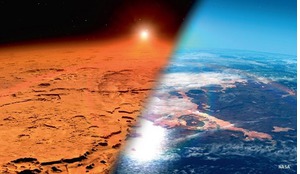The process of extracting solar energy from space and transferring it to Earth is an increasingly topical issue. A series of projects and experiments have been conducted in recent years by states, national space agencies, research centres and private entities to assess whether solar energy converted into microwaves could be transmitted to receiving stations on Earth’s surface on a large scale. Here, the authors investigate the promise of this major undertaking and consider some of the legal and technical challenges.
Since the end of the 1960s, the United States and, subsequently, other countries such as China and Japan, have been interested in harnessing solar energy in outer space and transmitting it efficiently to Earth.
According to a definition provided in 1968 by Peter Glaser, who introduced the concept of the solar power satellite, space-based solar power (SBSP) means deploying very large solar arrays into a continuously and intensely sunlit Earth orbit, collecting gigawatts of electrical power, electromagnetically beaming it to Earth and receiving it on the surface. The presumption is that the power could then be used as baseload power via direct connection to the existing electrical grid, or to manufacture synthetic hydrocarbon fuels, or even beamed at low intensity directly to consumers.
Engineers have long contemplated that solar power can be farmed regardless of weather conditions or the time of day, thus overcoming the limits of terrestrial solar energy creation, which are weather-dependent. The technology might also be useful for future lunar activities and on other celestial bodies.
In January 2023, the Caltech Space Solar Power Project used the Transporter-6 mission to launch a prototype - the Space Solar Power Demonstrator (SSPD) - into orbit to test several key components for harvesting solar power in outer space and beaming it back to Earth. Its demonstration technology is known as MAPLE (Microwave Array for Power-transfer Low-orbit Experiment). Caltech scientists claim that MAPLE successfully demonstrated wireless power transfer on 3 March 2023.
Space-based solar power can provide energy reliably at all times, thus providing stability to the power grid
At the regional level, the European Space Agency (ESA) is currently conducting conceptual studies for space-based commercial scale solar power plants. The SOLARIS initiative is designed to assess the feasibility of harvesting solar energy from space for clean Earth energy needs by considering the widest possible range of options for transmitting energy safely and efficiently. These include radio frequency transmission and lasers for Space-Based Solar Power and simple reflection of sunlight to Earth-based solar farms. The goal of SOLARIS is to pave the way for a possible decision in 2025 to establish the technical and political viability of SBSP for terrestrial energy needs. It will also address potential environmental, health and safety issues, as well as challenges related to regulation and international space policy coordination.
The concept is complementary to, rather than competing with, terrestrial renewables, as space-based solar power can provide energy reliably at all times, thus providing stability to the power grid, while the share of intermittent renewables continues to increase, reducing dependence on large-scale storage solutions.
 Photo from space of the interior of MAPLE with the transmission array to the right and the receivers to the left.
Photo from space of the interior of MAPLE with the transmission array to the right and the receivers to the left.
Sustainable development
The use of solar energy could support various international terrestrial initiatives including the 2015 Sustainable Development Goals (SDGs), in particular SDG 7 which is to “Ensure access to affordable, reliable, sustainable and modern energy for all” and SDG 13 to “Take urgent action to combat climate change and its impacts”.
Moreover, solar energy may have a role within the Sendai Framework for Disaster Risk Reduction 2015-2030, which outlines seven clear targets and four priorities for action to prevent new and reduce existing disaster risks. It was adopted at the Third UN World Conference on Disaster Risk Reduction in Sendai, Japan, in March 2015 and is the first major agreement of the post-2015 development agenda that specifies concrete actions for Member States to protect development gains from the risk of disaster.
The use of solar energy could support various international terrestrial initiatives including the 2015 Sustainable Development Goals
The use of solar power sources can potentially contribute to, and support the targets of the Charter of the Sendai Framework for disaster risk reduction by substantially reducing:
- global disaster mortality by 2030
- the number of affected people globally
- direct economic loss from such disasters
- damage from such disasters to critical infrastructure and the disruption of
basic services.
It could also assist in:
- strengthening disaster risk governance to better manage disaster risk at national, regional and global levels
- investing in disaster risk prevention and reduction through structural and non-structural measures to enhance the resilience of persons, communities and countries
- enhancing disaster preparedness for effective response and to ‘build back better’ in recovery, rehabilitation and reconstruction.
Also of relevance is the 2000 International Charter for Space and Major Disasters initiated by ESA, the Centre National d’Etudes Spatiales (CNES) and the Canadian Space Agency (CSA), following the UNISPACE III conference in 1999. It represents a worldwide collaboration, through which satellite data are made available for the benefit of disaster management, and by combining Earth observation assets from different space agencies, the Charter allows resources and expertise to be coordinated for rapid response to major disaster situations.
This initiative mobilises the resources and know-how of 17 Charter Members and 130 states and their satellites through a single access point that operates continuously at no cost to the user. The three largest cost factors associated with disasters are lack of energy, communications and night-time illumination so, once again, solar power satellites could potentially provide affordable power to enable these crucial relief elements.
SBSP thus represents a clean energy solution for mitigating anthropogenic global warming and, given the energy and climate crisis on Earth, the ‘net zero’ emissions targets of 2050 and issues of land availability for renewable energy installation. SBSP could therefore be part of the solution in the future, technology and costs permitting.
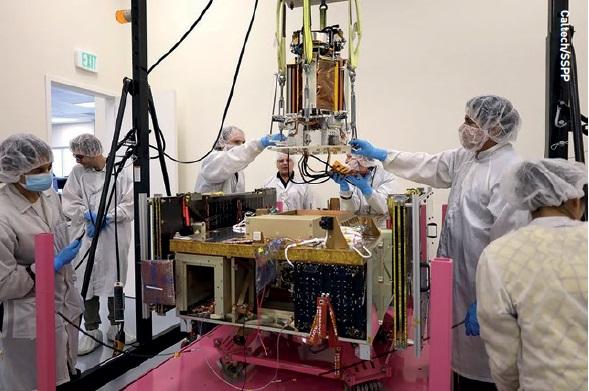 A deployable solar panel and power transmitter structure is lowered over the main body of Caltech’s Space Solar Power Demonstrator in preparation for its launch to orbit on 3 January 2023.
A deployable solar panel and power transmitter structure is lowered over the main body of Caltech’s Space Solar Power Demonstrator in preparation for its launch to orbit on 3 January 2023.
Supporting space activities
As solar energy would be transmitted wirelessly, it would be possible to transfer it to a receiving station wherever it is needed, even on the Moon
On 25 October 2021, the United Nations General Assembly adopted the ‘Space2030’ Agenda (by Resolution 76/3). The use of solar energy could contribute to achieve some of the objectives of the Agenda, in particular:
- Facilitate and promote the integration of the space sector with other sectors, including energy, public health, the environment, climate change as well as the development of multi-stakeholder partnerships leading to innovative space-based solutions for implementing the SDGs (Objective 1.2).
- Promote the use of space-based solutions in global efforts to ensure sustainable forest and ocean economies (Objective 1.6).
- Advance the role of space technologies in addressing climate change and facilitating the transition to low-emission societies, and promote international collaboration in that regard, in line with international mechanisms and organizations (Objective 2.4).
- Promote the use of space-based technologies in all phases of the disaster management cycle, applicable to both natural and man-made disasters response, recovery, reconstruction and rehabilitation (Objective 2.5).
As solar energy would be transmitted wirelessly, it would be possible to transfer it to a receiving station wherever it is needed, even on the Moon or other celestial bodies, where a readily available energy source would enhance our ability to undertake exploration. The Sun can also be a reliable source of energy that can be exploited to power various deep space exploration activities, including both manned and unmanned missions.
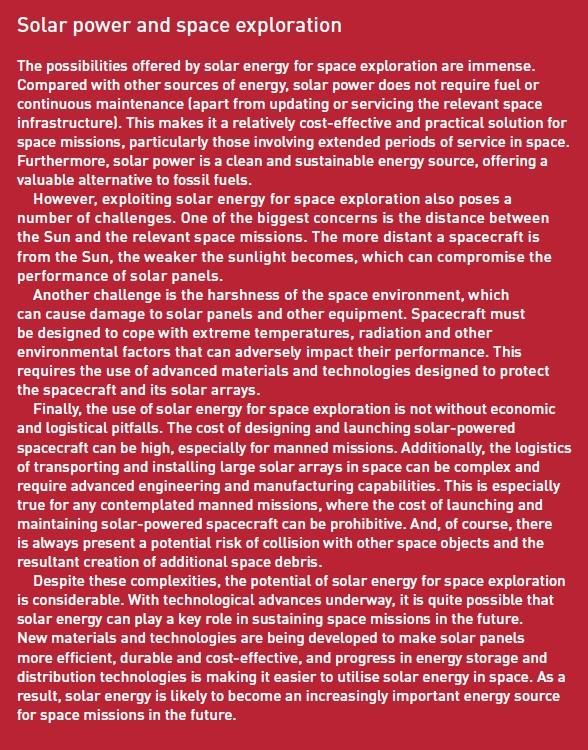
Legal considerations
Since solar power satellites (SPS) will be developed and operated in outer space, and constitute a ‘use’ of space, they are subject to the provisions of United Nations’ space treaties, in particular the 1967 ‘Treaty on Principles Governing the Activities of States in the Exploration and Use of Outer Space, including the Moon and other Celestial bodies’, also known as the Outer Space Treaty (OST). They will be subject to the relevant principles of space law, starting with the qualified freedom of use of outer space specified in Article I, which state that - in general terms - technology and energy are to be used for the benefit and in the interests of all countries.
In the light of Article II of the OST, SPS shall not be undertaken in such a way as to constitute an actual or implied “appropriation” of outer space, including with respect to the use of GEO orbital locations.
 Space-based solar power involves transforming solar power into electricity via photovoltaic cells in geostationary orbit around Earth. The power is then transmitted wirelessly in the form of microwaves at 2.45 GHz to dedicated receiver stations on Earth, called ‘rectennas’, which convert the energy back into electricity and feed it into the local grid.
Space-based solar power involves transforming solar power into electricity via photovoltaic cells in geostationary orbit around Earth. The power is then transmitted wirelessly in the form of microwaves at 2.45 GHz to dedicated receiver stations on Earth, called ‘rectennas’, which convert the energy back into electricity and feed it into the local grid.
Pursuant to Article III, solar energy power activities must be carried out in accordance with international law, which will include relevant and applicable environmental law and telecommunications regulations.
Solar energy power activities must be carried out in accordance with international law
The use of SPS also raises issues in terms of security. According to Article IV of the OST, the placement of any object carrying nuclear weapons or any other kind of weapon of mass destruction in outer space is prohibited. Consequently, the construction of SPS infrastructure must be performed in such a way as to avoid it being qualified, once built, as a weapon of mass destruction.
Also relevant is Article VI of the OST, which specifies that States have international responsibility for national activities in outer space, including solar energy activities in outer space, as well as Article VII - as elaborated in the 1972 Convention on International Liability for Damage Caused by Space Objects - which provides that the launching state is liable for certain specified damage caused by its space object on a fault or absolute liability basis, depending on the location of such damage. An interesting - and as yet unresolved - issue that then arises is whether damage that directly results from the beam projected by SPS could be considered as damage caused by a “space object”.
Article VIII of the OST provides that States shall retain jurisdiction and control over space objects that are carried in a national register, while in outer space. Particular attention should also be given to registration issues prior to launching SPS, as well as the provision of relevant information to the United Nations as provided for by the 1975 Convention on Registration of Objects Launched into Outer Space.
Article IX provides that States shall conduct their activities in space with due regard to the corresponding interests of other states and take various steps to avoid harmful interference as well as contamination. SPS will have to be constructed so as to ensure that any electromagnetic disturbance they generate does not unduly interfere with the operation of other satellites, including telecommunications infrastructure already in orbit.
Articles X and XI of the OST are particularly relevant in the case of the use of space solar energy as they promote international cooperation by sharing information about the flight and position of space objects, as well as the nature, conduct, locations and results of activities conducted by States Parties.
Lastly, as SPS will require quite specific orbital positions and radio-frequency spectrum, both for telecommunications and for energy transmission, they will have to conform to the International Telecommunications Union (ITU) regime. Although the issue of solar energy transmission as such does not fall within the definition of “telecommunications” as defined by the ITU, its regulations may nevertheless apply to these uses of the radio frequency spectrum, insofar as they may cause harmful interference to other services. The legal requirements for the filing for and allocation of frequencies will therefore also have to be complied with.
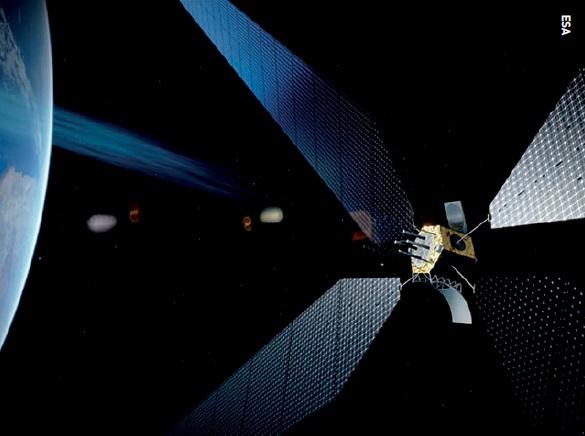 A concept image of a future in-orbit demonstrator for space-based solar power.
A concept image of a future in-orbit demonstrator for space-based solar power.
Ultimate promise
Space-based solar power generation represents a formidable energy solution for Earth and also for space missions
Space-based solar power generation represents a formidable energy solution for Earth and also for space missions. However, the construction, development and operation of SBS imply diverse technical challenges in terms of cost and the technology utilised. In addition, from a legal perspective, the deployment of such systems requires an understanding of how, inter alia, space law, environmental law and telecommunications law will apply, and what governance gaps exist.
Notwithstanding these limitations, solar energy remains a promising source of energy to alleviate energy problems on Earth and to contribute to sustainable space exploration. We look forward to further discussions and development to address all of the challenges and therefore to better understand how the use of solar energy might enhance the lofty but extremely important goals of maintaining the safety, stability, security and sustainability of space activities, as well as maximising the benefits for humanity.
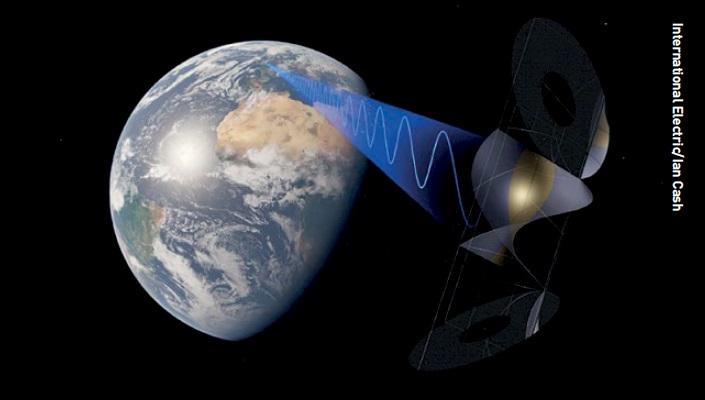 The CASSIOPeiA (Constant Aperture, Solid-State, Integrated Orbital Phased Array) proposal for space-based solar power. The UK government’s 2021 report, drawn up by consultancy Frazer-Nash, concluded that a 1.7 km-wide CASSIOPeiA satellite in geostationary orbit transmitting solar radiation to a 100 km2 rectenna located on Earth would generate 2 GW of continuous power - equivalent to the output from a large conventional power station.
The CASSIOPeiA (Constant Aperture, Solid-State, Integrated Orbital Phased Array) proposal for space-based solar power. The UK government’s 2021 report, drawn up by consultancy Frazer-Nash, concluded that a 1.7 km-wide CASSIOPeiA satellite in geostationary orbit transmitting solar radiation to a 100 km2 rectenna located on Earth would generate 2 GW of continuous power - equivalent to the output from a large conventional power station.
About the authors
Anne-Sophie Martin is a visiting researcher in International Law and Space Law, Institute for International Legal Studies of the National Research Council (ISGI-CNR), Rome, Italy. She received her LL.M. in Space Law and Telecommunications Law from the University of Paris-Saclay and her PhD from Sapienza University of Rome.
Steven Freeland is Emeritus Professor at Western Sydney University, Professorial Fellow at Bond University, a Director at the International Institute of Space Law (IISL) and Co-Principal of space law firm Azimuth Advisory. He also has various visiting or adjunct positions at universities/institutes in Copenhagen, Vienna, Toulouse, Hong Kong, Montreal, Kuala Lumpur and London. He is a Member of the Space Law Committee of both the International Law Association and the International Bar Association.










